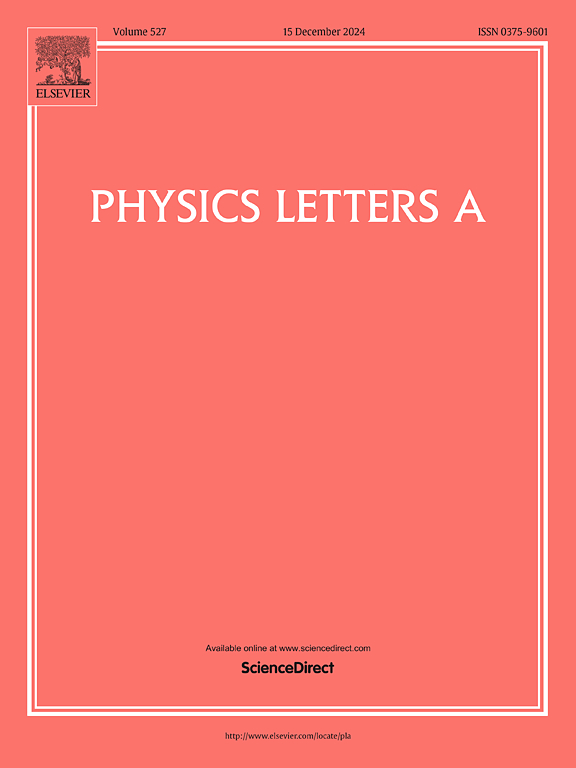Computational screening of Ti-Based YTi3H8 (Y = Na, K and Rb) hydrides for efficient solid-state hydrogen storage system
IF 2.3
3区 物理与天体物理
Q2 PHYSICS, MULTIDISCIPLINARY
引用次数: 0
Abstract
There has been a lot of recent interest on hydrogen storage due to the fact that hydrogen may be utilized as an energy source. Evaluation of newly synthesized compounds' hydrogen storage capabilities has dominated studies on hydrogen storage applications. For the first time, density functional theory (DFT) calculations have been run to study the unique characteristics and hydrogen storage capabilities of the YTi3H8 (Y = Na, K, and Rb) compounds. The lattice constants for the compounds being studied are 4.85 Å for RbTi3H8, 4.74 Å for KTi3H8, and 4.54 Å for NaTi3H8 when optimized in the cubic phase. These hydrides have negative formation enthalpy, which means they are thermodynamically stable. High gravimetric hydrogen storage densities of 4.62 % for NaTi3H8, 4.23 % for KTi3H8, and 3.40 % for RbTi3H8 make YTi3H8 (Y = Na, K, and Rb) a promising candidate for hydrogen storage. In addition, the electronic properties of these compounds lend credence to their metallic properties. Furthermore, these compounds satisfy the Born stability conditions as shown by examination of the mechanical properties obtained from elastic constants, such as Pugh's ratio and Young's modulus. While both NaTi3H8 and KTi3H8 hydrides are brittle, Pugh's ratio and Cauchy pressure show that KTi3H8 hydride is ductile. The mechanical stability, high hydrogen storage capacity, and metallic nature of YTi3H8 (Y = Na, K, and Rb) indicate that they might be used in solid-state hydrogen storage devices. Fuel cell technologies, hydrogen-powered cars, and stationary energy storage applications can benefit from their stability and high hydrogen content, making them potential candidates for sustainable hydrogen energy solutions.
求助全文
约1分钟内获得全文
求助全文
来源期刊

Physics Letters A
物理-物理:综合
CiteScore
5.10
自引率
3.80%
发文量
493
审稿时长
30 days
期刊介绍:
Physics Letters A offers an exciting publication outlet for novel and frontier physics. It encourages the submission of new research on: condensed matter physics, theoretical physics, nonlinear science, statistical physics, mathematical and computational physics, general and cross-disciplinary physics (including foundations), atomic, molecular and cluster physics, plasma and fluid physics, optical physics, biological physics and nanoscience. No articles on High Energy and Nuclear Physics are published in Physics Letters A. The journal''s high standard and wide dissemination ensures a broad readership amongst the physics community. Rapid publication times and flexible length restrictions give Physics Letters A the edge over other journals in the field.
 求助内容:
求助内容: 应助结果提醒方式:
应助结果提醒方式:


